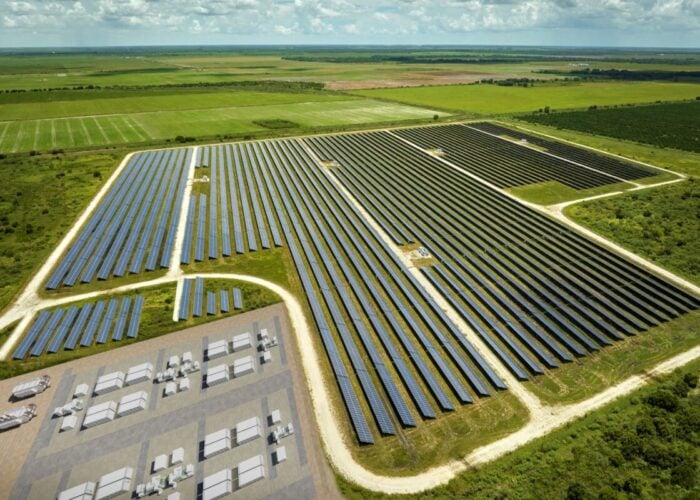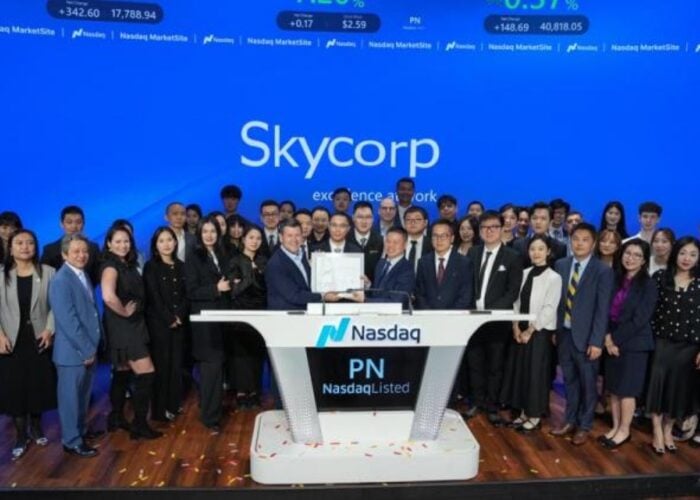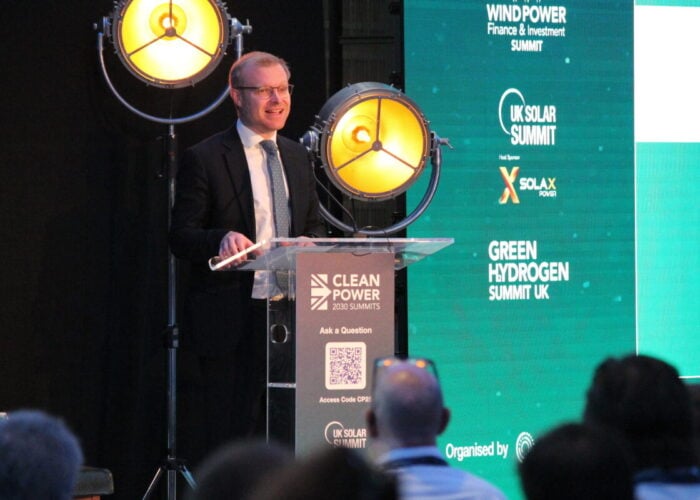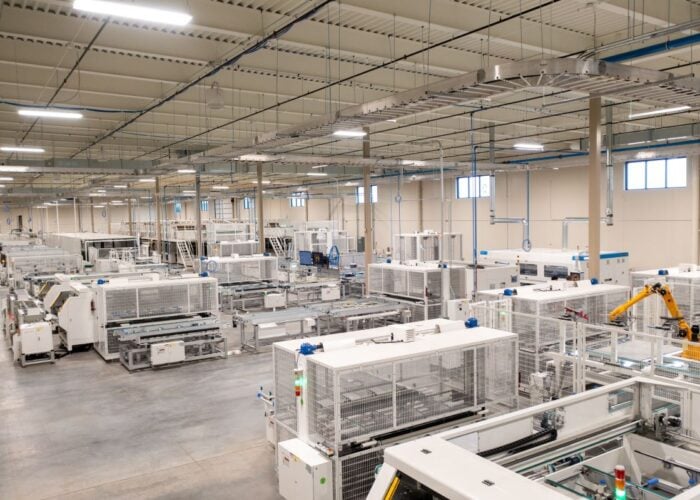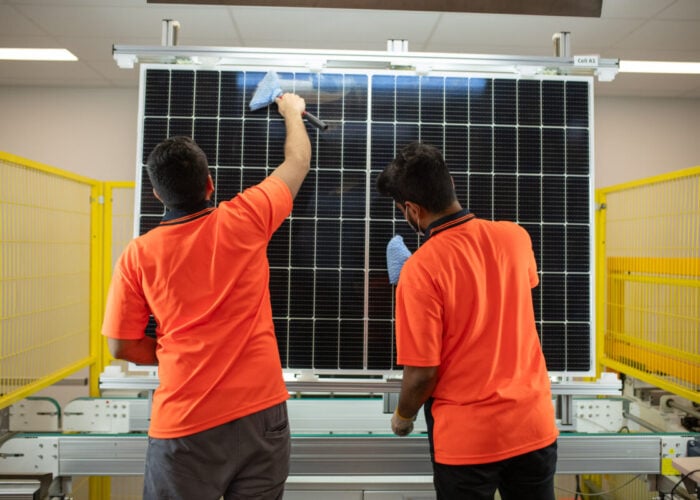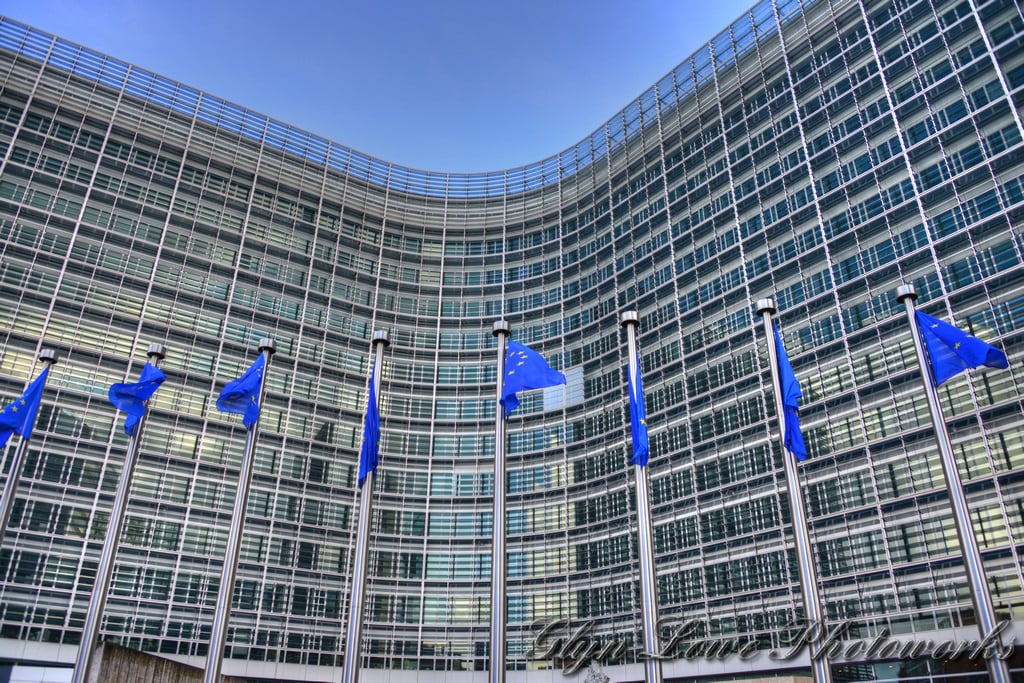
Fulfilling the European Union’s new green hydrogen strategy could need as much as 120GW of additional wind and solar to power electrolysers, the bloc’s need hydrogen strategy says.
The EU today published its eagerly-anticipated hydrogen strategy, providing a roadmap for the bloc’s progress towards establishing a clean, cost-competitive hydrogen economy as it looks to completely decarbonise its economy.
Unlock unlimited access for 12 whole months of distinctive global analysis
Photovoltaics International is now included.
- Regular insight and analysis of the industry’s biggest developments
- In-depth interviews with the industry’s leading figures
- Unlimited digital access to the PV Tech Power journal catalogue
- Unlimited digital access to the Photovoltaics International journal catalogue
- Access to more than 1,000 technical papers
- Discounts on Solar Media’s portfolio of events, in-person and virtual
Today hydrogen represents a “modest fraction” of the global and EU energy mix and, even then, it is largely produced using fossil fuels. Therefore, the strategy argues, for hydrogen to play a role in climate neutrality, its production must become fully decarbonised. In addition, for this to be both fully decarbonised and cost-effective against fossil fuel-driven hydrogen production, a strategic approach is needed.
The EU has therefore developed what it labels an ambitious plan to put hydrogen on the path to cost-effective carbon neutrality. This will, however, require a critical mass in investment, a supportive regulatory framework, new lead markets, sustained R&D into breakthrough technologies and a large-scale infrastructure market that “only the EU and the single market can offer”, the EU strategy document claims.
Despite the current high cost of generating hydrogen via renewable-led electrolysis, the EU has established renewable hydrogen as its priority, with the power for electrolysis to come mainly from wind and solar. The EU aims for renewable hydrogen to be “progressively… deployed at large scale alongside the roll-out of new renewable power generation” out to 2050, aided by continuing decline in technology costs.
As a result, at least 6GW of renewable hydrogen electrolysers are aimed to be installed by 2024, capable of producing up to 1 million tonnes of renewable hydrogen. This will see the installation of electrolysers next to existing demand centres, such as chemical complexes and larger refineries, and powered by local renewable generators.
At this stage clean hydrogen would not be cost-competitive. As a result the EU is shifting its policy focus on incentivizing supply and demand through “appropriate State aid rules”, however specific details on this have yet to be made clear.
From 2025 to 2030 however, hydrogen would need to become an “intrinsic part” of Europe’s energy system, with at least 40GW of renewable hydrogen electrolysers needed by 2030. This level of deployment would see renewable hydrogen become cost-competitive with other forms
To power this level of electrolysis, the EU would need to scale up and directly connect somewhere between 80 – 120GW of solar and wind capacity, costing somewhere in the region of €220 – 340 billion, the EU estimates.
The full EU Hydrogen Strategy document can be read here.
Response to the strategy has been strong, with many highlighting the role solar and other renewables will play in nudging hydrogen towards decarbonisation.
Antony Skinner, energy partner at UK-based law firm Ashurst, said: “The publication of the strategy is a significant development and what is particularly key is the fact that it recognises that in the early stages of hydrogen deployment specific quotas and other incentives may be required to attract the significant level of investment and commitment required to allow clean hydrogen to displace other fuels.”
The strategy has also been published amidst a slew of project news linking gigawatt-scale renewables projects with hydrogen production. Earlier this week Saudi Arabian renewables developer ACWA Power was named as a significant partner in a project aimed at partnering up to 4GW of solar and other renewables with various green gas plants, while there has also been movement in Australia, where a proposed 3.6GW green hydrogen facility intends to use solar and storage as its primary power source.
Solar Media, publisher of PV Tech, is hosting its inaugural Green Hydrogen Digital Series event next month. The event, hosted entirely online, is supported by SmartEnergy and will take place over four days from 17 – 21 August 2020. For more details on the event and how to get involved, click here.

